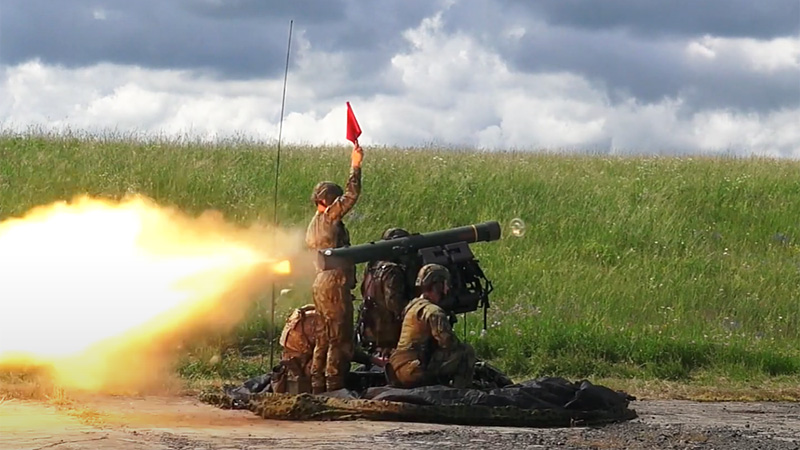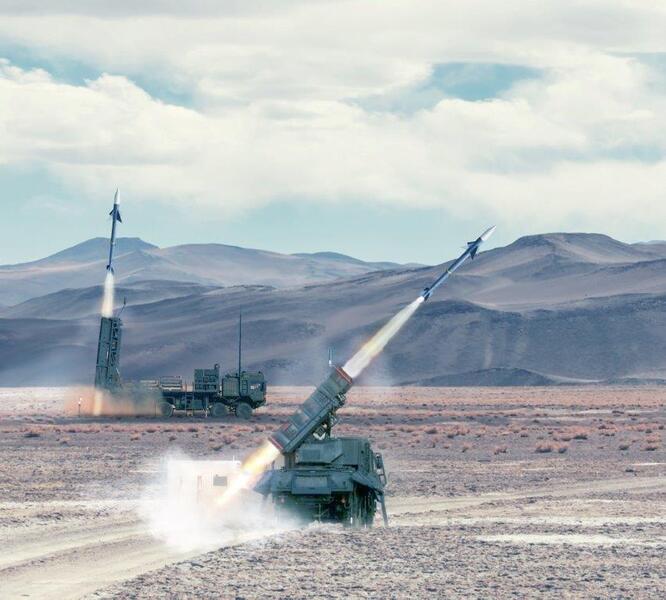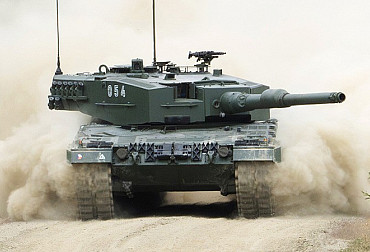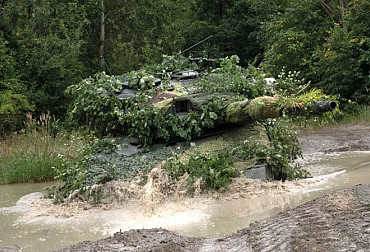Ground-based Air Defence acquires modern assets, but in insufficient numbers
Ground-based Air Defence has recently received some well-deserved attention. Examples and experiences not only from the Nagorno-Karabakh conflict or Ukraine have already been discussed. The topic of the past year was the acquisition of SPYDER anti-aircraft missile sets from the Israeli company RAFAEL, which will replace the outdated 2K12 KUB anti-aircraft missile set in the 251st missile battalion of the 25th anti-aircraft missile regiment. The acquisition of the SPYDER sets follows the previous purchase of MADR mobile radars from the same company. Following the retirement of the STRELA 10 sets in 2021 (at least part of which has been provided to Ukraine) and the delivery of the SPYDERs, two ground-based air defence systems will remain in the arsenal of the Army - the SPYDER short- and medium-range system (four batteries of four launchers each), and the RBS-70 and RBS-70 NG anti-aircraft missile mandpad systems (sixteen pieces each). Thus, in the further development of the Czech air defence system, it will be good to consider primarily an increase in the number of weapons already in place and the introduction/renewal of mobile means for the direct defence of troops on the move.
Concept of Build-up of the Czech Army 2030 speaks of the need for continuous coverage of the "designated" part of the Czech airspace and strengthening of point protection of "designated" objects. "The Land Forces units will be provided with VSHORAD (Very Short Range Air Defence) sets." And for the 2030 milestone, it foresees "an increase in the number of VSHORAD sets with the capability to engage air attack assets while in motion. SHORAD systems will provide air defence for up to three ODOS (objects important for national defence). The capability to counter tactical and operational level unmanned aerial vehicles, rocket, artillery and mortar fire will be achieved through the acquisition of C-UAS and C-RAM systems."
Mobile ground-based air defence
Concept of Build-up of the Czech Army 2030 speaks of the need for continuous coverage of the "designated" part of the Czech airspace and strengthening of point protection of "designated" objects. "The Land Forces units will be provided with VSHORAD (Very Short Range Air Defence) sets." And for the 2030 milestone, it foresees "an increase in the number of VSHORAD sets with the capability to engage air attack assets while in motion. SHORAD systems will provide air defence for up to three ODOS (objects important for national defence). The capability to counter tactical and operational level unmanned aerial vehicles, rocket, artillery and mortar fire will be achieved through the acquisition of C-UAS and C-RAM systems."
On Monday 25 July, Ukrainian Defence Minister Oleksiy Reznikov confirmed the receipt of the first GEPARD self-propelled anti-aircraft systems, which have been intensively discussed since the spring: 'So far I can say that the first three GEPARDs have officially arrived today from Germany. These are anti-aircraft systems for which several tens of thousands of rounds have also been delivered. We are expecting the first 15 Gepards. The first three arrived in Ukraine today and are already available to the armed forces." The Gepard (Flugabwehrkanonenpanzer Gepard) is manufactured by Krauss-Maffei Wegmann. It is designed to protect armoured convoys, manoeuvring units and stationary objects from attacks by helicopters and combat aircraft operating at low and very low altitudes day and night in all weather conditions and under conditions of intense electronic warfare by the enemy. In Germany, it was retired from service in 2010. It was replaced by the Wiesel 2 Ozelot light anti-aircraft system, which relies on FIM-92 Stinger and LFK NG missiles instead of gun armament.
A similar mobile vehicle is completely lacking in the arsenal of the Czech Armed Forces today, either with barrel or missile armament. The manufacturer of the RBS-70NG allows the integration of the system on a chassis platform, so in the Czech Army environment it could be either Pandur II 8x8 vehicles or TITUS 6x6 armoured vehicle. Incidentally, regarding the target state of the RBS-70NG, about a year ago in our report, the commander of the 252nd anti-aircraft battalion, Colonel Petr Řezníček, also expressed his view that the optimal state is to mount the RBS directly on the S-KOV vehicle (with the possibility of dismounting it), which would then operate with supported elements such as mechanized battalions, etc.
 Picture: RBS-70NG system firing | Jan Juřica / CZ DEFENCE
Picture: RBS-70NG system firing | Jan Juřica / CZ DEFENCE
Projects for this purpose are being developed, for example, for the US Army (Stryker A1 Initial Maneuver Short-Range Air Defence Vehicle) by GDLS and Leonardo DRS, whose armament combines a pair of AFM-114L Longbow Hellfire missiles capable of operating against ground and air targets, a 30mm XM914 Bushmaster automatic cannon and a coaxial machine gun. Fire is controlled by four MHR radars supplemented by an IFF (Identification Friend-Friend-Friend) antenna. The first vehicle was delivered to the 5th Battalion, 4th Air Defense Regiment, 10th Army Air and Missile Defense Command, US Army Europe and Africa, in April 2021. The anti-aircraft variant of the German BOXER is being developed by Rheinmetall under the name Oerlikon Skyranger. The system relies on the firepower of the Oerlikon Revolver Gun, a 35mm gun capable of firing airburst munitions, the Stinger (and equivalent) missile and the Cheetah (C-RAM, a missile against rocket, artillery and mortar fire). The purpose of these and similar vehicles is to provide direct fire support and air defence to task forces in motion.
The question of the number of SHORAD complexes
Each battery of the SPYDER system will provide protection of an area of 55 x 55 km, which in the case of four batteries is less than 16 % of the area of the Czech Republic. The main task is to secure objects important for national defence (ODOS), whether military or, by government decision, non-military. Concept of Build-up of the Czech Army 2030 speaks of a "maximum of three ODOS". There are only two nuclear power plants in the Czech Republic. In addition to the capital, there is a long list of other major targets to defend, and especially with the possibility of a high intensity attack, as we are seeing in Ukraine, the question (and automatic answer) is whether four batteries are sufficient. If in peacetime, for example against a terrorist threat, a single anti-aircraft missile squad may be sufficient (more for maintaining capabilities within the armed forces), for deployment in a symmetrical high-intensity conflict it is a rather negligible force.
 Picture: Anti-aircraft missile set SPYDER | Ministry of Defence of the Czech Republic
Picture: Anti-aircraft missile set SPYDER | Ministry of Defence of the Czech Republic
The feeling that the Czech Republic stands far away from the hotbeds of potential conflicts should leave us completely. We can look to Poland, for example, which is modernising its armed forces at an accelerating pace. In the area of air defence, it will rely primarily, in addition to various VSHORAD systems (for example, the Narew system developed in cooperation between MBDA and PGZ-Narew) and the old Soviet S-125 and S-200 systems, on eight batteries of the US Patriot Medium Range Air Defence System (64 launchers) and two batteries (six launchers) of the British CAMM system.
Today, the German Bundeswehr (Luftwaffe) has one anti-aircraft missile squadron (Flugabwehrraketengeschwader 1 'Schleswig-Holstein'), to which all surface-to-air missile units of the German Air Force are subordinated, with the exception of Flugabwehrraketengruppe 61 (integrated into the Dutch air defence). In addition to the Air Defence Centre, the squadron consists of three groups (Nos 21, 24 and 26) at Sanitz, Bad Sülze and Husum. The units are deployed to protect areas, objects or groups of objects as well as mobile operations. Their mission is to provide extensive and sustained airspace protection. Since the retirement of the HAWK and Roland weapon systems at the end of 2005, ground-based air defence has mainly been carried out using the Patriot system. In 2013, Germany had twelve batteries. Then, in response to Russian aggression against Ukraine and the need to secure NATO's eastern flank, Germany recently sent an undetermined number of these systems to Slovakia.
The appropriate number of air defence assets and their parameters are alchemy. The correctness and effectiveness of the mix will always be confirmed only by the need for live deployment. In view of the location and size of the Czech Republic's territory, the question of long- and medium-range systems can be addressed in cooperation with neighbouring allied states and by seeking all-round appropriate and economic solutions. However, self-sufficiency is important in the area of SHORAD and VSHORAD, including the ability to destroy rocket, artillery and mortar missiles in motion while protecting manoeuvring troops. The means are already selected in this area; thus, all that is needed is to strengthen capabilities – for obvious and unquestionable air defence capabilities are one of the essential elements of deterring a potential adversary.





















